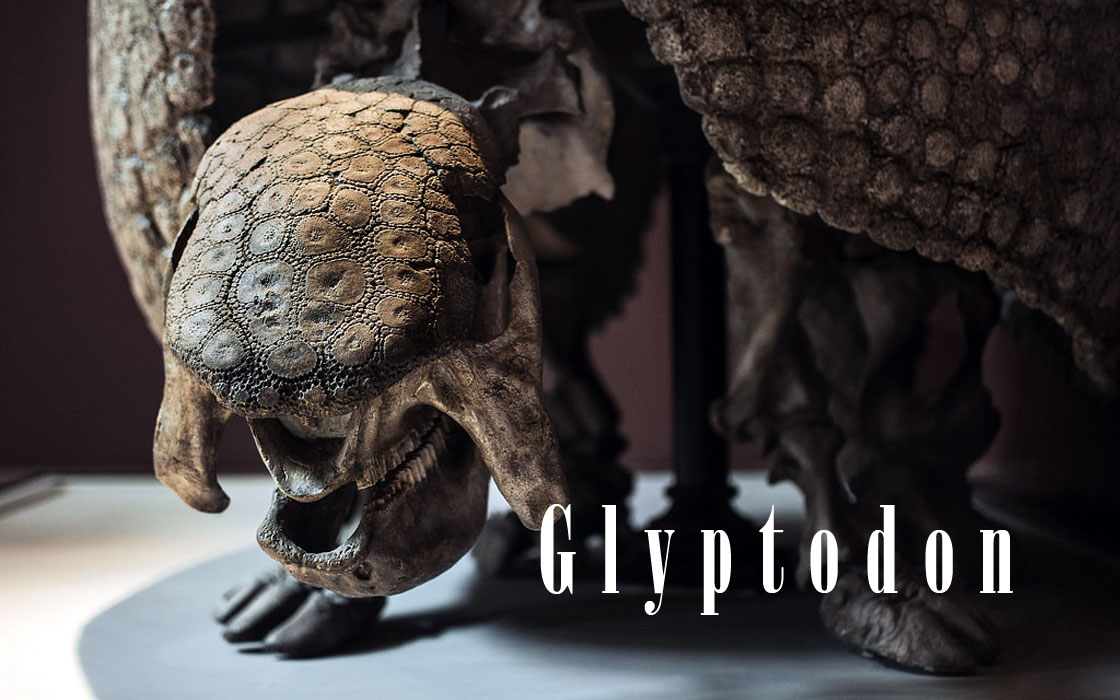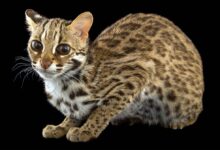Glyptodon
You can joke that it resembled a Volkswagen Beetle and there will be some truth in it (as in any joke). However, there is more truth in the statement that these mammals were walking fortresses that no land predator of that time could grasp. Probably only the appearance of man destroyed the inviolability of prehistoric, powerful Xenarthrans (included: Armadillo, Glyptodonts, Pampatheres, Anteaters, Tree sloths, Ground sloths, Aquatic sloths). Today, the closest relatives of the heavy and large representatives of the genus Glyptodon are slow, inconspicuous sloths, insectivorous anteaters and (perhaps obvious considering their appearance) armadillos.
Classification
- Kingdom: Animalia
- Phylum: Chordata
- Class: Mammalia
- Order: Cingulata
- Family: Chlamyphoridae
- Subfamily: †Glyptodontinae
- Genus: †Glyptodon
- Species:
- †Glyptodon clavipes
- †Glyptodon elongatus
- †Glyptodon euphractus
- †Glyptodon jatunkhirkhi
- †Glyptodon munizi
- †Glyptodon petaliferus
- †Glyptodon reticulatus
- †Glyptodon rivapacis
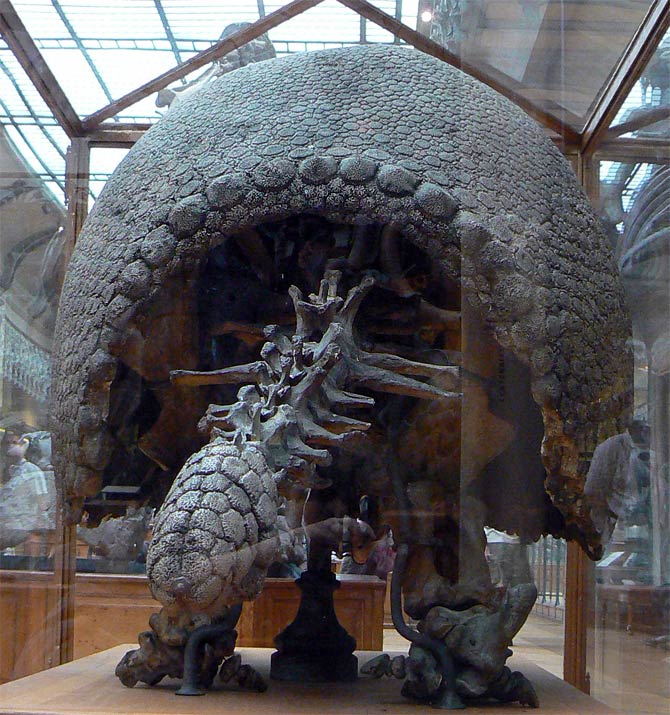
Discovery
It was discovered at the beginning of the 19th century and then mistakenly classified as a Megatherium. The find consisted of a femur, weighing about 3 kg and measuring 15-20 cm in width, and fragments of the tail. After about 4 years, the remains of the armor, deeply buried in clay, were discovered in the area. Before Glyptodon became Glyptodon, however, it was called Chlamydotherium, Schistopleuron Hoplophorus, and Pachypus. The current name was coined by Richard Owen – an English biologist and paleontologist.
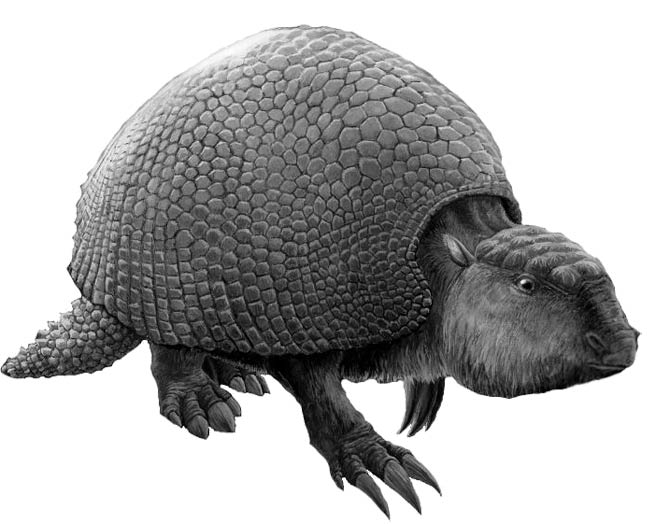
Occurrence and dating
Glyptodon probably lived from 2.5 million to 11 thousand. years ago in what is now South America. Its remains have been found in Uruguay, Argentina and Brazil.
It stayed in warm and humid forests and heavily overgrown areas. Some individuals, however, may have adapted to life in open and cooler areas.

Characteristic
Appearance
The nasal space has been reduced by additional muscles whose functions are as yet unknown. It is possible that this type of muscle played a role similar to that of today’s elephants. The lower jaw was deep, which allowed it to support the massive chewing muscles. The teeth were similar to those of today’s armadillos, but they were clearly grooved. The large nasal sinuses suggest that Glyptodon may have been adapted to the dry, cold air of the Pleistocene.
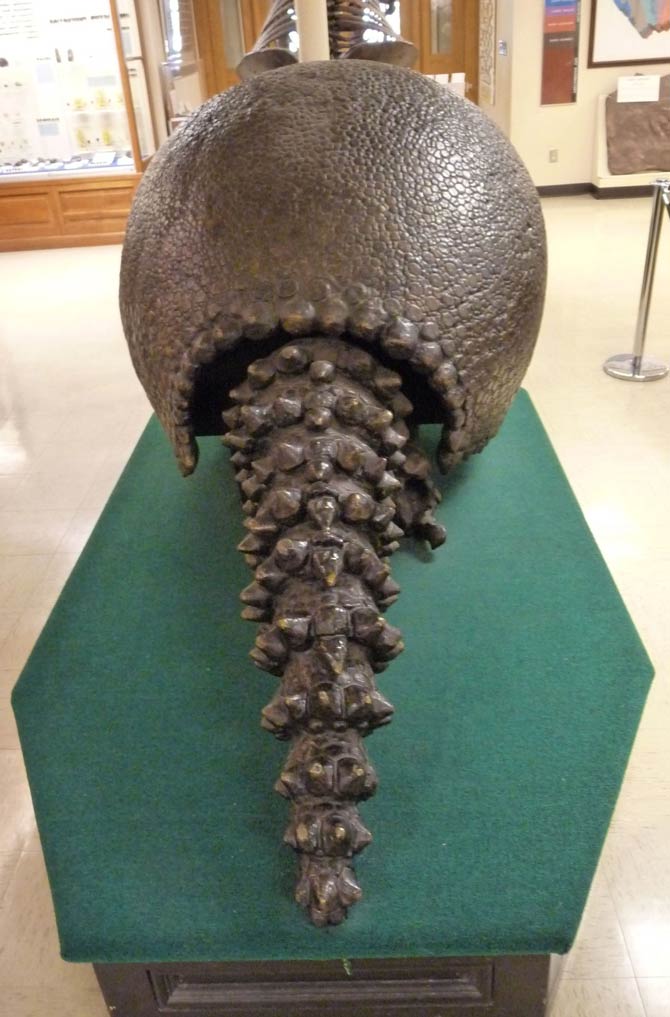
Armor
The armor plates found were arranged in double or triple rows on the sides, front and rear of the armor. Similar shields covered the head and tail. In 2000, it was discovered that several species of the genus Glyptodon also had osteoderms on their mouths. This would indicate the period in which they lived on Earth – the Pleistocene. This was a time South America joined North America through a land isthmus. A new bridge between continents initiated great migrations of species, including predators.
Some specialists hypothesized that the shields on the head and mouth acted as a defense against new enemies. The hypothesis is reflected in reality, as the discovered dorsal carapace with a visible fracture suggests that Glyptodon was able to fight other animals.
The abdominal part was also armored. With this kind of protection, the Glyptodon was armored like a turtle. However, unlike most turtles, this mammal was unable to hide its head. However, he could defend himself with a hard helmet and a powerful tail. To support the entire structure, however, Glyptodon had to have very tightly connected vertebrae, short but massive limbs, and a broad shoulder rim.
Strong armor probably protected a very large and heavy body. Glyptodon could reach over 3 m (10 ft) in length, 1.5 m (4.9 ft) in height and weigh up to 2 tons (4,400 lb).
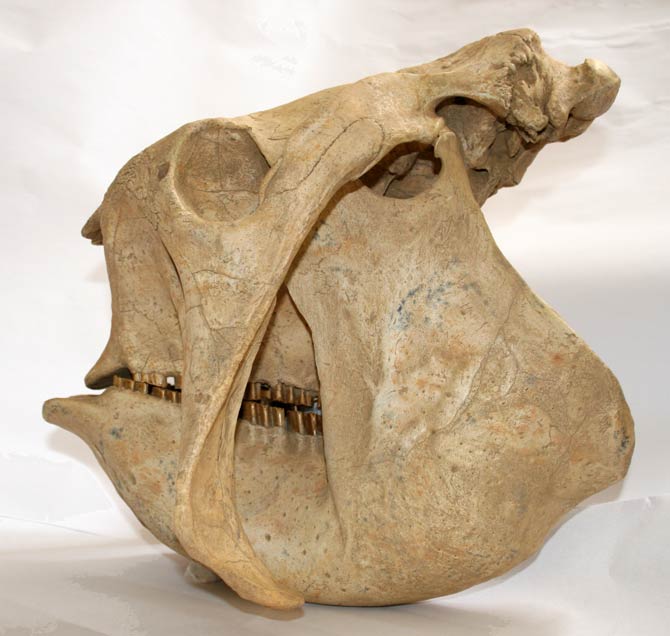
Diet
The structure of the found teeth suggests that Glyptodon was a herbivorous animal. With his tall, cylindrical molars, he minced the fibrous food. It had no incisors or tusks, so the masticatory muscles had to be very strong and large in order for the hard-to-chew parts of the plant to be properly crushed.

Extinction
Humans could have had a large impact on the extinction of glyptodonts. The hunters hunted these mammals, perhaps because of their armor, which protected them well against bad weather.
One of the discovered individuals survived until the beginning of the Holocene. This would mean that Glyptodon coexisted with humans. So humans had plenty of time to develop weapons that would kill armored (almost head to toe) creatures. Intelligence and the ability to observe probably helped man discover the weaknesses of the glyptodonts. The expansive tendencies of Homo sapiens and climate change could have been the main reasons for the extinction of these armored animals.
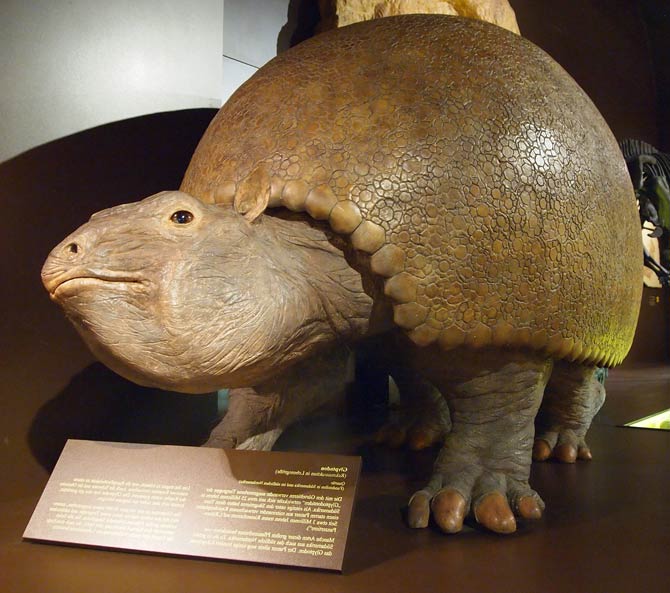
Detailed data / dimensions
Glyptodon
- Body length: up to 3.3 m (11 ft)
- Height: 1.5 m (4.9 ft)
- Weight: up to 2 tons (4,400 lb)
- Temporal range: from 2.5 million to 11 thousand years ago
- Distribution: South America
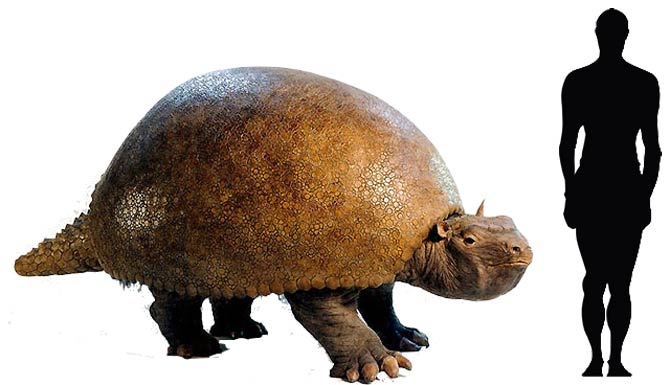
Glyptodon – interesting facts
- The Greek name Glyptodon means “grooved / carved tooth”.
- Male glyptodonts may have used their armored tails to fight for females and / or as ornaments to attract females.
- Glyptodon looked very much like armored ankylosaurus dinosaurs that lived from the Jurassic until the Late Cretaceous.
- If these mammals lived in dense forests, their eyesight could be very poor. Thus, a form of defense against a predator was the size and very hard armor that no teeth could penetrate.
- Doedicurus clavicaudatus was the largest representative of the Glyptodon family and the closest relative of the heroes of today’s article – it reached a weight of 1,900 to 2,370 kg (4,190 to 5,220 lb), a height of about 1.5 m (4.9 ft) and a length 3.6 m (12 ft).
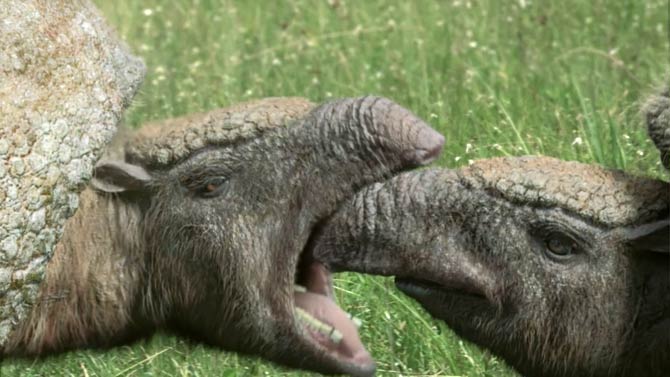
Recommended
- Megafauna
- Mammoth
- Stegodon
- Mastodon
- Platybelodon
- Indricotherium
- Cave bear
- Short-faced bear
- American lion
- European cave lion
- Smilodon – Saber-toothed tiger

